
Melanoma is the most dangerous type of skin cancer. Photo by National Cancer Institute on Unsplash.
Over the past two decades, Latinos have witnessed a 20 percent increase in melanoma cases, the most dangerous form of skin cancer. According to the Skin Cancer Foundation, Latinos who get skin cancer are more likely to be diagnosed at later stages, when it is harder to treat.
CALÒ News spoke with Dr. Matthew Lomeli, Medical Director for AltaMed’s Medical Patient Service Center, Telehealth and also the lead physician for Dermatology. A key part of Lomeli's mission is raising awareness among the Latino community about melanoma and skin cancer. “Latinos are at higher risk when you compare us to Caucasian people and that's multifactorial. The percentage in skin cancer is increasing and melanoma is obviously the scariest cancer of the skin,” Lomeli said.
A small study in San Diego looked at nonmelanoma skin cancer (basal cell carcinoma and squamous cell carcinoma, the two most common types of skin cancer) among Hispanic, Asian and Caucasian patients. While the incidence was much higher in Caucasians, the researchers found that the Hispanic patients were diagnosed at a significantly younger age (62 versus 70) and had more skin cancers in the “central face” area, according to the Skin Cancer Foundation.
Early prevention is key

Dr. Matthew Lomeli, lead physician for dermatology.
Lomeli said that early prevention is crucial. “If we're able to see it and diagnose it earlier, then we have a better chance of removing it,” he said. “The longer it's there, the bigger it's gonna get, but [with]more potentiality for it to spread and once it spreads, it's so much harder to treat.”
In addition, he discussed the ABCs of melanoma, which are the fundamental qualities that provide clues about this dangerous skin cancer.
“A” is for asymmetry. It’s important to look out for spots or lesions where one-half of a mole or spot diverges from its counterpart in shape or size. This irregularity frequently hints at melanoma.
“B” represents borders. According to Lomeli, individuals need to check for any border irregularities. If the edges of a mole are indistinct and jagged instead of being smooth and well-defined, it's cause for more concern.
“C’’ stands for inspection of color variation within a mole. If something's monochromatic or one color, that's a good sign but if there's two or more colors like blue, red or brown, then that's something that can be higher risk.
“D” is for diameter of the spot or lesion. It’s recommended to see a dermatologist if you have a mole that is more than six millimeters in diameter (roughly the size of a pencil eraser).
“E” stands for evolution or change. Changes in size, shape, color, texture or elevation over time could indicate malignancy. It's the most common one he sees patients come in for, according to Lomeli. “When you become familiar with these markers, you can take proactive steps to improve your health and can be alert to any changes that may be concerning.”
Examinations
Another way to stay prevented is to actually perform skin checks. Lomeli said that there's no good answer when how often the skin should be checked. “If you look at different bodies of medicine, different bodies of medicine have different guidelines,” he said.
For Lomeli, it’s very important that the Latino community check in on their skin at least once a year, whether it's through a physician or a self examination. “People that are at higher risk are lighter skinned individuals, people that have had skin cancer in the past, people that have skin cancer in their family, people that are overly exposed and people that have had severe sunburns.Those are gonna be at a higher risk. And so I would say those people need to check their body more often than the average person. But the real question is how often and that's where, you know, there's real, no real good evidence,” Lomeli said.
Awareness
He also believes that one of the many reasons why Latinos are now at higher risk for skin cancer is because there isn’t enough awareness among the community. “There's this general belief in the community that Latinos are less likely to burn as easily as non-Latinos or Caucasians. And so I think that gives a false sense of security,” he said.
Another of the reasons Lomeli believes that Latinos are at higher risk is because in the Latino population overall there are more blue collar workers. “People are working outside and are more exposed to the sun …compared to the white collar jobs, who are gonna be inside an office,” he said. According to the Bureau of Labor Statisticsin 2018 Latinos (66.1 percent) had the highest labor force participation rates.
Sunscreen
All people, regardless of skin color, are at risk for developing skin cancer. Not only is it important for blue collar workers to wear sunblock, but for everybody to do so. “Everyone should be wearing sunblock every single day. But those that are working outside or playing outside, playing sports outside should really ramp up their sun awareness and the amount of protection that they use to avoid the harm,” he said.

Photo by No Revisions on Unsplash.
He also said that the benefits of sunscreen are really to avoid and prevent sun damage, whether it's in the form of skin cancer or in the form of just skin damage seen as blemishes or wrinkle spots.
Lomeli explained to CALÒ News about Sun Protection Factor. Low protection is considered anything with an SPF below 15, encouraged for use while indoors or for daily use. For those that are outdoors more often, SPF 30 or greater is recommended and should be applied ideally 30 minutes before heading outside. “That allows time for it to be absorbed quickly in the skin and provide more of a protective layer,” he said. “Oftentimes we see people, they get out to the beach and then they start applying the sunblock, we should really be applying it at home, before we actually get out there and then reapplying it.”
He also suggested that individuals look into buying sunscreen that has broad spectrum coverage, meaning that it's covering both UVA and UVB rays, which are different types of forms of energy called ultraviolet (UV) radiation commonly seen as sunlight. Both UVA and UVB rays can cause harm to the skin, according to Lomeli.
Misleading advertisement in products
Additionally he spoke about the false advertisement that can be misleading when buying sunblock. “Advertisement doesn't always necessarily lead us in the right direction. Some sunblocks will say, you know, waterproof, but really the FDA says that we can't do that anymore on labeling, and instead it should say water resistant,” he said. “And if it says water resistant or sweat resistant, I think again, it's a false sense of security when in all reality it’s not helping them at all.” Lomeli said it’s important that individuals reapply sunblock every 40 to 80 minutes as the sunblock can wear off while swimming and sweating and being exposed to that moisture.
Advice
Lomeli wanted to give some advice for those who may not like sunscreen. “For those who don't like to wear it, just try to avoid the sun at the worst times of the day and use protective clothing,” he said. “The worst times of the day are going to be between 10am and 4pm So that's gonna be the worst of sun exposure.”
He also added that many young adults forget about the importance of avoiding the sun or wearing sunblock. “Harmful effects from the sun usually show up about 20 years later. So, whatever you're doing today to prevent it, you're gonna be thankful, to your 20 year old, future self,” he said.

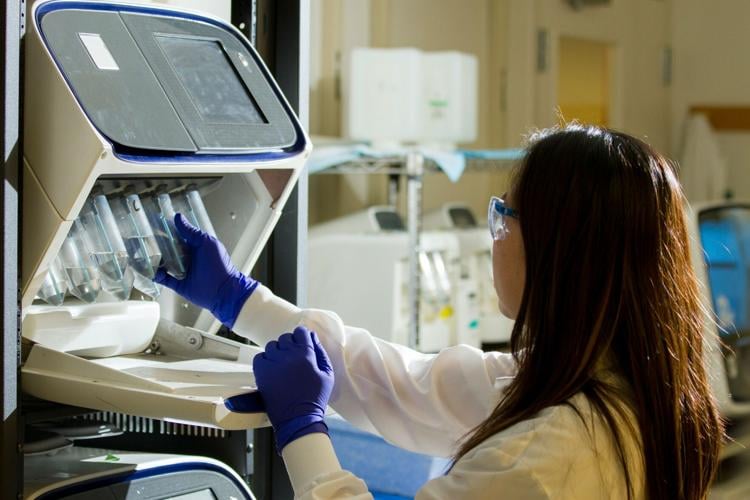
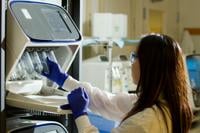

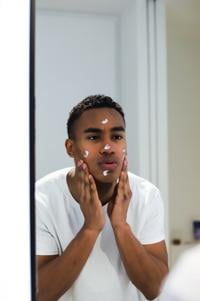

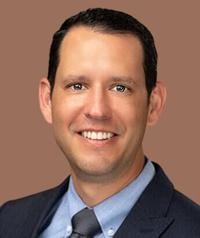

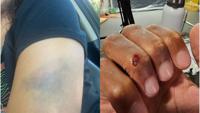



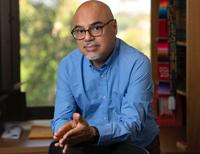

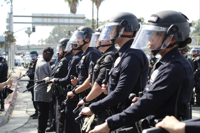
(0) comments
Welcome to the discussion.
Log In
Keep it Clean. Please avoid obscene, vulgar, lewd, racist or sexually-oriented language.
PLEASE TURN OFF YOUR CAPS LOCK.
Don't Threaten. Threats of harming another person will not be tolerated.
Be Truthful. Don't knowingly lie about anyone or anything.
Be Nice. No racism, sexism or any sort of -ism that is degrading to another person.
Be Proactive. Use the 'Report' link on each comment to let us know of abusive posts.
Share with Us. We'd love to hear eyewitness accounts, the history behind an article.